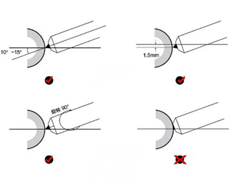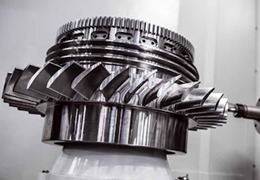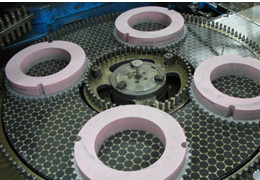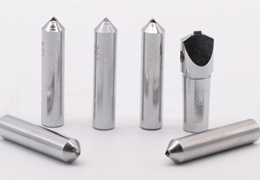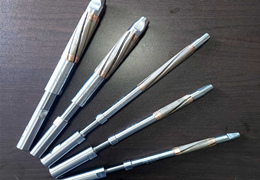Drilling
Drilling is the first process of machining holes in solid materials. The diameter of drilling hole is generally less than 80mm. The common drilling tool has: twist drill, center drill, deep hole drill, etc.
The technological characteristics and application of drilling
Due to structural constraints, the bending stiffness and torsional stiffness of the drill bit are low, coupled with poor centering, and the drilling accuracy is low, which can only reach IT13 ~ IT11 in general, the surface roughness was also large, Ra was generally 50~12.5 m. But the metal removal rate of drilling hole is large and the cutting efficiency is high. Drilling is mainly used for machining holes with low quality requirements, such as bolt holes, thread bottom holes, oil holes, etc. For holes with high machining accuracy and surface quality requirements, they should be achieved through reaming, boring or grinding in subsequent machining.
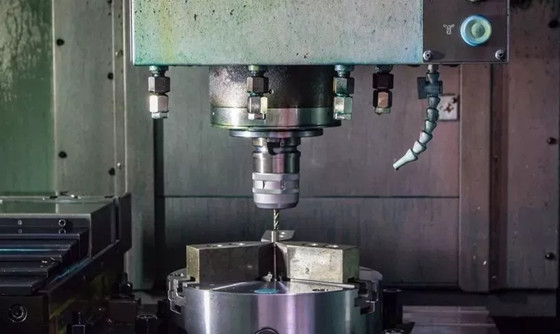 Reaming
Reaming
Reaming is one of the finishing methods of hole, which is widely used in production. For smaller holes, reaming is a more economical and practical machining method compared with inner circle grinding and fine boring.
The technological characteristics and application of reaming
The reaming allowance has a great influence on reaming quality. The allowance is too large, the reamer's load is too large, the cutting edge is quickly blunt, and it is not easy to get a smooth machining surface, and the dimensional tolerance is not easy to ensure. The margin is too small to remove the cut marks left by the upper process, which naturally does not improve the quality of hole processing. Generally, the coarse hinge is 0.35~0.15mm, and the fine hinge is 01.5~0.05mm.
Compared with grinding hole and boring hole, reaming productivity is high and the precision of hole can be easily guaranteed. However, the reaming hole cannot correct the position error of the hole axis, and the position accuracy of the hole should be guaranteed by the previous procedure. Reaming accuracy is generally IT9 ~ IT7, and surface roughness Ra is generally 3.2~0.8. For holes with medium size and high precision requirements (such as IT7 precision holes), drilling and reaming process is a typical processing scheme commonly used in production.
 Boring
Boring
Boring is a machining method in which prefabricated holes are enlarged by cutting tools. The boring can be done either on a boring machine or on a lathe.
The technological characteristics and application of boring
The bore size of boring hole is not limited by the size of the cutting tool, and the boring hole has strong error correction ability, the original hole axis deviation error can be corrected by multiple cutting, and the boring hole and positioning surface can maintain a high position accuracy.
Boring has a wide range of processing, can be processed in different sizes and different accuracy levels of holes, for holes and hole system with large aperture, size and position accuracy requirements, boring is a good processing method. The boring precision is IT9 ~ IT7, and the surface roughness Ra is 3.2 ~ 0.8 m. Boring can be used in boring machine, lathe, milling machine and other machine tools, with the advantages of flexibility, the production is widely used.
 Honing
Honing
Honing is the polishing of holes by using a honing head with a honing strip
The technological characteristics and application of honing
1. Honing can achieve higher dimensional accuracy and shape accuracy, and the machining accuracy is IT7~IT6. The roundness and cylindricity error of the holes can be controlled, but the honing cannot improve the position accuracy of the holes to be machined.
2. Higher surface quality can be obtained by honing, the surface roughness Ra is 0.2~0.025 m, and the depth of metamorphic defect layer of surface metal is extremely small (2.5~25 m).
3. Compared with the grinding speed, the circumferential speed of the honing head is not high (VC =16~60m/min). However, due to the large contact area between the honing band and the workpiece and the relatively high reciprocating speed (VA =8~20m/min), the honing efficiency is still relatively high.
Honing is widely used for machining precision holes in engine cylinders and various hydraulic devices in mass production. Generally, the aperture range is 5 ~ 500mm, and the ratio of hole depth to aperture can be 10 or more. However, honing is not suitable for machining holes on non-ferrous metal workpiece with large plasticity, nor can it be used for machining holes with keyways, spline holes, etc.






